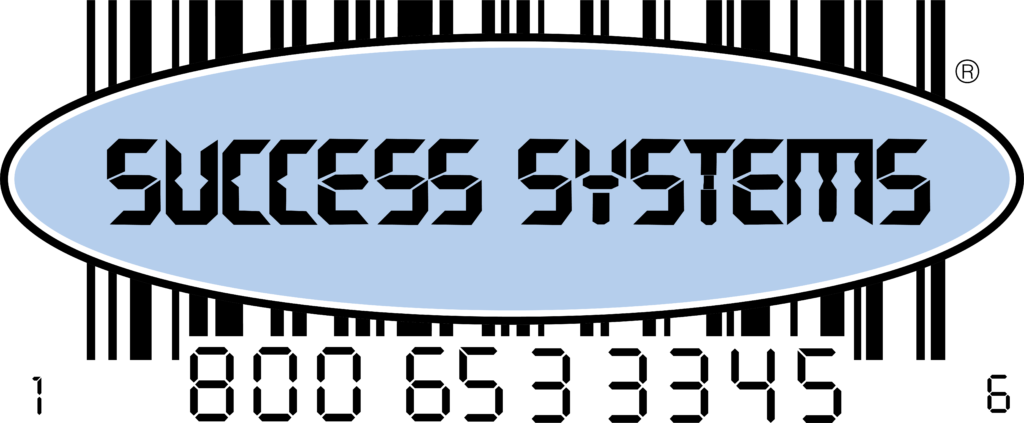There are over 121,000 convenience stores selling fuel in the United States that are responsible for 80% of total fuel sales. While it’s a high traffic item, fuel is one of the most challenging products for gas stations and convenience stores to manage and requires significant oversight due to regulatory requirements and razor-thin profit margins. It’s such a challenging market segment that according to the 2018 NACS/Nielsen Convenience Industry Store Count, the number of convenience stores selling fuel has declined for the last three years. In this blog, we’ll discuss how incorporating a fuel management system in your store can help you save money, lower your gas prices, increase margins, improve fuel inventory management, and stay relevant in the industry.
For companies still selling fuel, competition in this economic segment has led to business owners looking for ways to improve efficiencies, leading to positive global annual growth for the fuel management systems industry between 2014 and 2017, despite a slowdown in global economic growth. This average annual growth rate of 5.53% is anticipated to continue, with revenues expected to increase from 2017’s $3.07B to $3.67B by 2022. This growth continues to be driven by the efforts of convenience store owners and gas station owners to employ solutions for maximizing and maintaining control over the profitability of a revenue stream that is extremely volatile. Let’s explore five fuel management system features that work behind the scenes to save your operation money in the long run.
Automated Tasks to Reduce Regulatory Exposure
As a gas station or convenience store operator, you have numerous retail systems that you need to maintain and monitor. In-store inventory, point of sale, lottery and tobacco rewards programs, promotions, and loyalty programs. None of these are quite as vital or complicated, though, as your fuel management systems, given the volatility of pricing and supply lines. Fuel sales are also highly regulated by Federal, state, and local governments, and managing fuel sales appropriately requires attention to a number of requirements. Using an automated software solution can help your operation by managing two key regulatory and reporting activities.
UST/Tank Storage Compliance Reporting
A fuel management software solution first helps to control costs related to compliance. According to the EPA, there are approximately 552,000 underground storage tank (UST) systems nationwide. USTs are comprised of the storage container and connected underground piping in systems with at least 10% of their volume underground and are primarily regulated at the federal level when they contain petroleum or certain hazardous materials. However, oversight of UST programs is mostly executed at the state or territory level. Aboveground storage tank (AST) compliance is covered under other compliance regulations.
In either regulatory case, monitoring and compliance reporting are required in order to avoid regulatory penalties. Reporting includes leak detection records, testing and inspection documentation, repair logs, and your financial responsibilities according to the EPA’s Dollars and Sense booklet. This document includes requirements to prove that a gas station proprietor can cover through insurance or other means the cost of cleanup in the instance of a spill or 3rd party damage to the equipment. A comprehensive fuel management software solution can link into your monitoring hardware, submit required reports automatically, and maintain the proper records as required by federal regulations.
Tracking Tax Liability
The second way a fuel management system helps in preventing compliance costs is through managing your tax liability. As purveyors of fuel, gas stations are liable for taxes at Federal, state, and in some cases even local levels. These rates vary depending on fuel type, and can also include taxes on your storage tank system. A comprehensive tax listing for motor fuel taxes can be downloaded from the United States Energy Information Administration. If you self-report your tax liability throughout the year, a fuel management software solution can track purchases and sales, calculate your tax liability automatically, and submit the required documentation to the IRS. This eliminates time-consuming filing and keeps your financial records accurate at all times, in the event of an inspection or audit.
Inventory Management Incorporated in a Fuel Management System
As with any other product on the shelves of your retail space, fuel inventory has to be managed effectively in order to ensure you have adequate supply to meet consumer demand but also minimize waste. Fuel management systems can provide the necessary solutions to both inventory management and cost controls necessary to maintain profitability.
Automated Ordering and Delivery Management
The beauty of integrating a fuel management software solution into the operation and supply of your fuel pump systems is that it provides you with a third benefit of helping to maintain and monitor levels and usage in real-time.
From this data, your software can generate extremely accurate consumption models to determine an effective ordering and delivery schedule. Rather than having to perform time-consuming inventory tasks and placing orders on a schedule determined by your vendor, the software will connect with sophisticated tank monitoring technology to measure exact fuel levels, track usage, determine a time during the week least disruptive to your operations, contact the vendor to place an order for replenishment, and handle the receiving and invoicing.
All of this can be accomplished without any input from management, leaving them free to focus on customer experience, training, and other tasks geared towards improving the operation.
Real-Time Pool Margin Reporting Helps Maintain Profitable Pricing
With most gas stations selling multiple grades of fuel, and wholesalers and delivery services, all charging their own add-on fees to supply your pumps with each grade of gasoline, your cost per gallon can be difficult to track.
This is complicated by ever-changing prices and seasonal sales patterns causing prices to vary wildly over time. Add to these costs the credit card processing fees for each creditor, depending on how customers pay, and you have a tangled web of profits and costs that are hard to follow and interpret or determine a profitable cost per gallon that you should be charging. After all of these factors, margins generally average 5 cents profit per gallon. How do we maximize this? Enter the fourth way your automated fuel management software can help to control costs: it’s the ability to track and calculate all of theses costs behind the scenes. The system can also track and reconcile sales and deliveries on a daily basis, improving cash flow overall. All you have to do is set the sign once you determine your acceptable margins.
A special note on pricing. Gas sales are highly competitive and require lightning responsiveness to changes in market prices in your local market. Fuel management software solutions connected to your back-of-house management software suite allow instant pricing updates when pricing baselines change and allow the responsiveness necessary.
Integrated Loyalty Programs and 3rd Party Programs Into Your Point of Sale
The fifth feature of fuel management software that can help to control costs is the software’s ability to connect with customer relationship management software to track consumer behavior and integrate the information into loyalty programs. Discounts can be rolled out to the pump that will track and manage discounts to maintain profitability but also drive repeat patronage.
You also want to ensure your fuel management system integrates with your payment systems behind the counter and at the pump, in order to integrate the credit card fees into your reporting and pricing models. This will allow your pump systems to be compatible with established fleet management programs and their fleet-wide credit card accounts. For fleet cards, mileage can be entered at the pump as part of the purchase process, and specific vehicles can be tied to specific cards or be assigned a number that needs to be entered in the process of purchasing fuel. Fleet accounts can also establish how often a card can be used, how much can be purchased in a single transaction, limit transactions to only fuel purchases, and even set limits as to where the card can be used and at what times of the day or week cards are active. Capturing managed fleet market share provides multiple stable streams of business and increased revenue.
Automate Your Fuel Management System
Convenience stores and gas stations can use a fuel management system to keep costs low at the pump in order to provide the benefit of cheap fuel to all. Success Systems helps gas stations and conveniences stores drive traffic to the pumps, and thus increasing overall sales, by providing automated fuel management software solutions to our clients. Our ePB Books and ePB Accounting products offer fuel management solutions to C-store retailers and gas stations across the nation that automate compliance reporting, take the hassle out of prepay and post-pay tax payments, track real-time inventory and manage replenishment, track margins including associated fees, and integrate with loyalty programs and 3rd party fleet management programs in order to drive traffic to the pumps. With our fuel management software in place, clients can minimize the impact of margin volatility on costs, reduce waste, and manage inventory in ways that reduce overall costs. Contact us today to schedule a demo of our services.
You Might Also Like
Unlocking Efficiency and Profitability: ItScans-AI for Independent Retailers Powerful Tool Converts Paper Invoices to EDI – in 30 Seconds or Less Discover the power of ItScans-AI, the cutting-edge solution offered…
LotteryTrak® When only 5% of revenue is the retailer’s, control becomes the key to preventing losses in your Lottery Category. LotteryTrak is the most comprehensive, labor-saving, Real-Time based inventory solution…
Success Systems Announces Diamond-Level Sponsorship at 2023 Conexxus Annual Conference Norwalk, CT – Success Systems, the leading provider of retail automation solutions for independent retailers, is excited to announce…
Better managing inventory levels in your convenience store is something that will immediately impact the profitability of your business. Gone are the days of reconciliation in Microsoft excel and the…
In the past, retailers ran their businesses according to instinct and past experience. There were tried and true methods that all retailers swore by and for years it was how…






